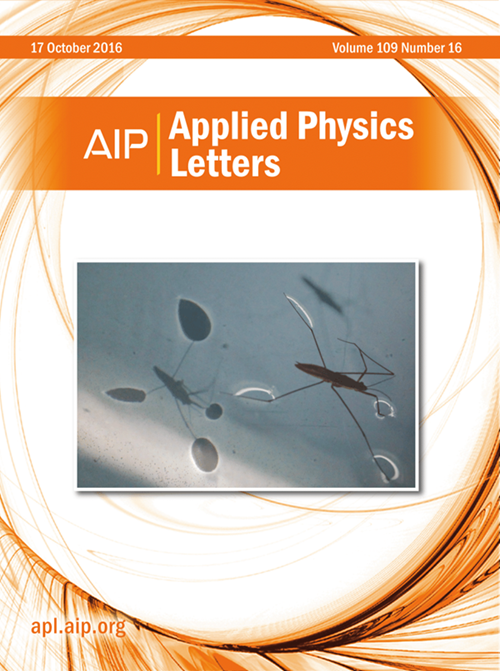磁性纳米颗粒的非线性光磁响应:光磁粒子光谱
IF 3.5
2区 物理与天体物理
Q2 PHYSICS, APPLIED
引用次数: 0
摘要
磁性纳米颗粒(MNPs)的光磁响应作为一种快速灵敏的生物分子检测手段已被广泛研究。然而,目前的研究主要集中在MNPs的线性光磁响应上。在这项研究中,我们探索了在足够强的交流磁场(≥3mt)和激光下诱导的MNPs的非线性光磁响应,称为光磁粒子谱(optoMPS)。optoMPS信号的潜在机制归因于MNPs在交流磁场和激光照射下的物理旋转。数值求解了Fokker-Planck方程,计算了optoMPS信号,同时建立了optoMPS系统进行测量。实验结果表明,随着谐波指数的增大,谐波与激励频率曲线向低频偏移。此外,我们还测量了不同铁浓度MNP样品的optoMPS信号,以研究在3 ~ 9mt交流磁场中的信噪比。值得注意的是,在9mt交流磁场中,第2次和第4次谐波允许铁的检测限为25 ng,为利用optoMPS信号高灵敏度检测MNP铺平了道路。本文章由计算机程序翻译,如有差异,请以英文原文为准。
Nonlinear opto-magnetic response of magnetic nanoparticles: Opto-magnetic particle spectroscopy
Opto-magnetic response of magnetic nanoparticles (MNPs) has been investigated as a means for rapid and sensitive biomolecule detection. However, current studies primarily focus on the linear opto-magnetic response of MNPs. In this study, we explore the nonlinear opto-magnetic response of MNPs induced in a sufficiently strong alternating-current (AC) magnetic field (≥3 mT) and under laser light, referred to as opto-magnetic particle spectroscopy (optoMPS). The underlying mechanism of the optoMPS signal is attributed to physical rotation of MNPs in an AC magnetic field and under laser light. Fokker–Planck equation is numerically solved to calculate the optoMPS signal while an optoMPS system is built for measurements. Experimental results show that the harmonic vs excitation frequency curve shifts to lower frequencies as the harmonic index increases. In addition, the optoMPS signal of MNP samples with different iron concentrations is measured to investigate the signal-to-noise ratio in AC magnetic fields with amplitudes ranging from 3 to 9 mT. Notably, the 2nd and 4th harmonics in an AC magnetic field with 9 mT allow for a limit-of-detection of 25 ng in terms of iron, paving the way for highly sensitive detection of MNPs with the optoMPS signal.
求助全文
通过发布文献求助,成功后即可免费获取论文全文。
去求助
来源期刊

Applied Physics Letters
物理-物理:应用
CiteScore
6.40
自引率
10.00%
发文量
1821
审稿时长
1.6 months
期刊介绍:
Applied Physics Letters (APL) features concise, up-to-date reports on significant new findings in applied physics. Emphasizing rapid dissemination of key data and new physical insights, APL offers prompt publication of new experimental and theoretical papers reporting applications of physics phenomena to all branches of science, engineering, and modern technology.
In addition to regular articles, the journal also publishes invited Fast Track, Perspectives, and in-depth Editorials which report on cutting-edge areas in applied physics.
APL Perspectives are forward-looking invited letters which highlight recent developments or discoveries. Emphasis is placed on very recent developments, potentially disruptive technologies, open questions and possible solutions. They also include a mini-roadmap detailing where the community should direct efforts in order for the phenomena to be viable for application and the challenges associated with meeting that performance threshold. Perspectives are characterized by personal viewpoints and opinions of recognized experts in the field.
Fast Track articles are invited original research articles that report results that are particularly novel and important or provide a significant advancement in an emerging field. Because of the urgency and scientific importance of the work, the peer review process is accelerated. If, during the review process, it becomes apparent that the paper does not meet the Fast Track criterion, it is returned to a normal track.
 求助内容:
求助内容: 应助结果提醒方式:
应助结果提醒方式:


